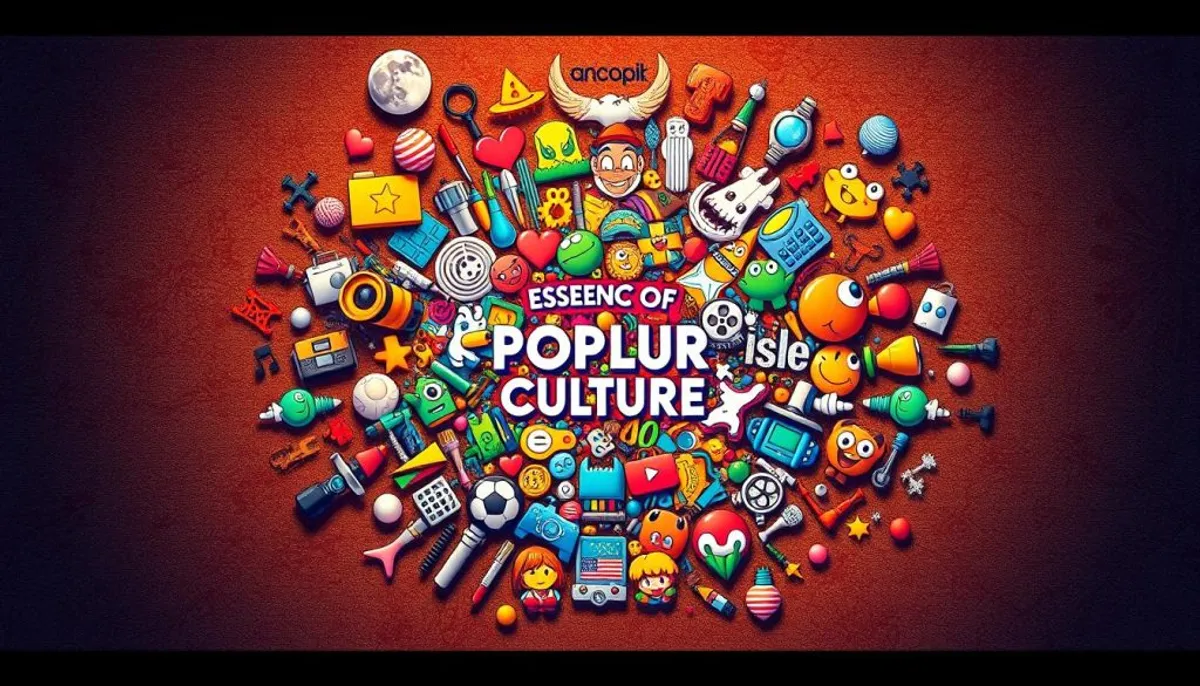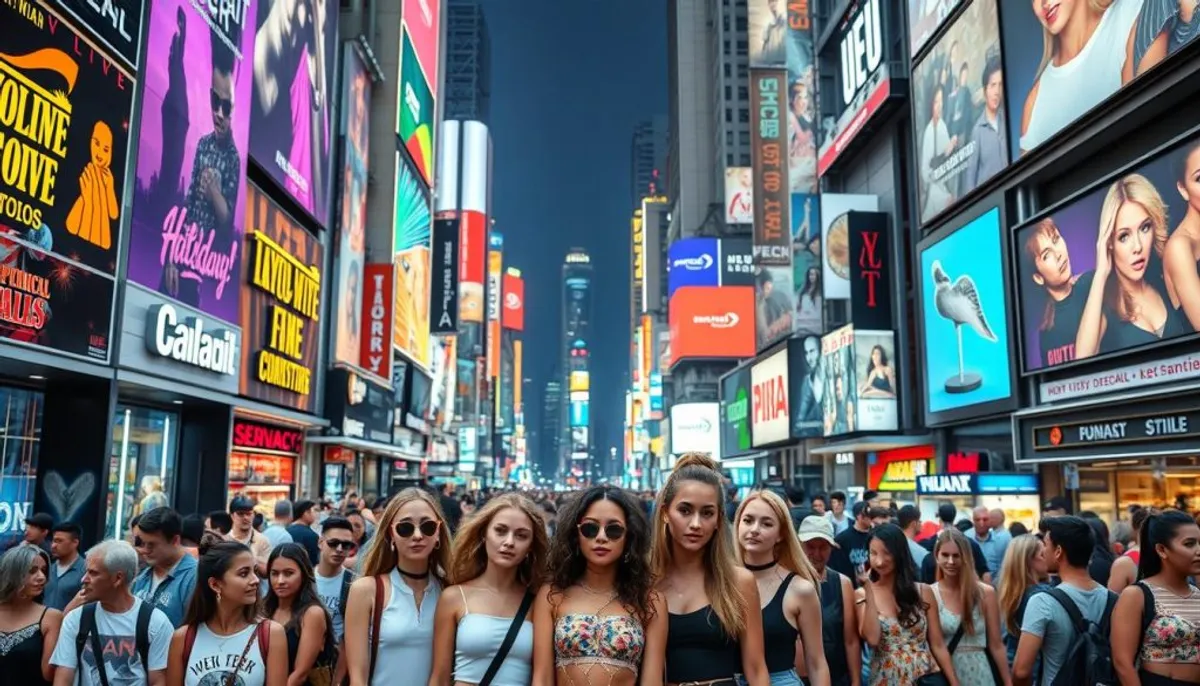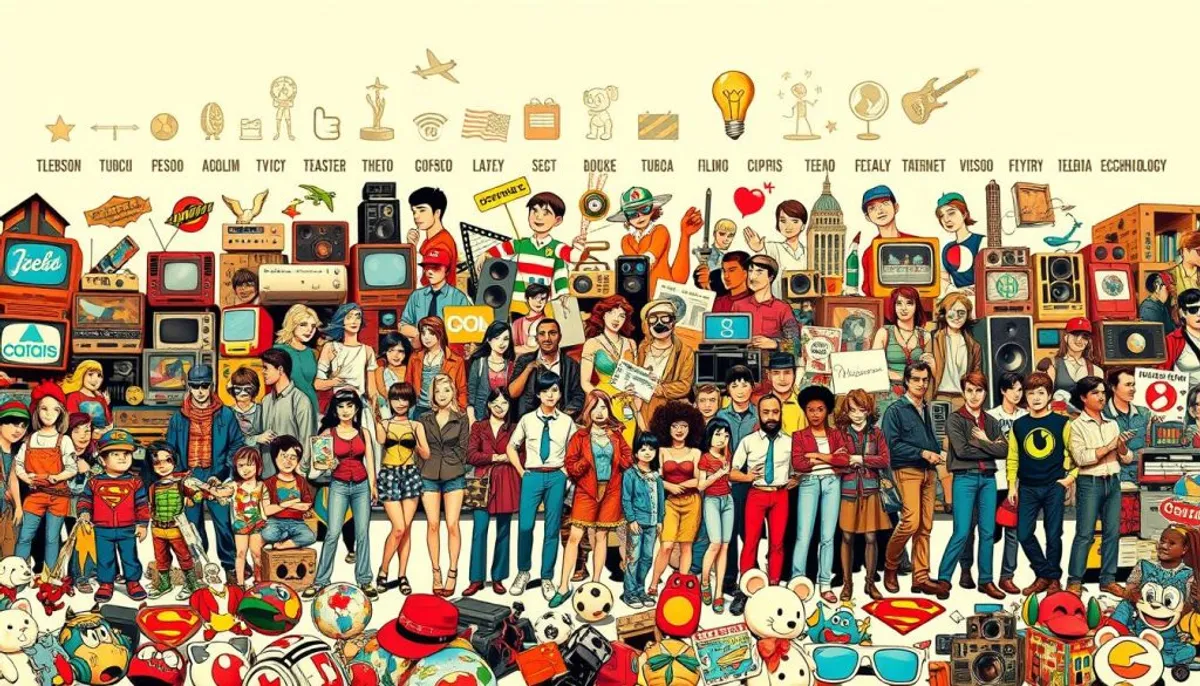Pop culture, this popular cultural phenomenon, fascinates and questions. What is pop culture? This form of artistic and social expression, born in the heart of the 20th century, has profoundly marked our society. It draws its roots from history while constantly reinventing itself.
Contrary to popular belief, popular culture did not just emerge yesterday. Since antiquity, circus games attracted crowds. In the Middle Ages, epic poems captivated a varied audience. The Renaissance saw the birth of theater accessible to all, with authors like Shakespeare.

However, it is truly in the 20th century that pop culture takes flight. Industrialization, mass literacy, and the advent of paid vacations created fertile ground. Mass media allowed for unprecedented dissemination. Icons like Elvis Presley and Marilyn Monroe became symbols of this new era.
Today, who is pop culture? It is you, it is us. It is that movie everyone has seen, that song everyone hums. It is a popular cultural phenomenon in constant evolution, reflecting our modern societies. It unites us, makes us dream, and sometimes even makes us reflect on our world.
Who is pop culture: understanding the popular cultural phenomenon
Popular culture, or pop culture, shapes our modern society. It emerged in the early 20th century with the rise of mass media. It encompasses a vast array of entertainment and popular trends.
The definition of popular culture
Popular culture represents the set of cultural practices widely spread and appreciated by the general public. It includes music, cinema, television, fashion, and video games. This mainstream culture is characterized by its ability to reach a broad audience through mass media.

The main characteristics of pop culture
Pop culture is distinguished by its accessibility and rapid dissemination. Social media play a crucial role: over 50% of young adults claim that these platforms influence their tastes in pop culture. The definition of pop culture is often shaped by these online interactions. Memes and viral videos have become essential, propelled by the Internet.
The influence on contemporary society
The impact of pop culture on our society is considerable. It shapes our behaviors, ways of thinking, and social interactions. For example, the video game industry generated over $220 billion in 2022, reaching a global audience. Television series, such as “Stranger Things,” capture the collective imagination and influence daily conversations. Pop culture serves as a barometer of collective mood, reflecting and influencing today's social, political, and cultural discourse.
The historical evolution of popular culture
Popular culture, or pop culture, has a deep history that extends back to antiquity. Its evolution reflects societal and technological transformations throughout the ages. To grasp today's popular culture, it is essential to look back in time.
The origins in antiquity
In antiquity, gladiatorial combats served as mass entertainment. These highly popular spectacles offered a collective experience similar to today's celebrities.
The transformation during the medieval period
The Middle Ages saw the emergence of popular culture through troubadours and festivals. These traditions foreshadowed the popular music and festivities we know today.
The modern emergence and industrialization
The modern era marked a major turning point for popular culture. Industrialization and urbanization fostered its development. Mass media, such as radio and cinema, allowed for widespread dissemination of cultural content.
| Period | Characteristics | Examples |
|---|---|---|
| Antiquity | Mass entertainment | Gladiatorial shows |
| Middle Ages | Oral and festive traditions | Troubadours, popular festivals |
| Modern era | Mass media | Radio, cinema, television |

Popular culture has evolved by adapting to social changes. From ancient gladiatorial combats to today's stars, it reflects our society. It showcases our collective values and aspirations.
The fundamental elements of the Pop Art movement
Pop Art, emerging in the mid-1950s in England, revolutionized art. It transformed everyday objects into icons, captivating the public with its innovative approach.
The influence of Andy Warhol and his contemporaries
Andy Warhol, an iconic figure of Pop Art, marked history with his “Marilyn Diptych.” This work, measuring 205×290 cm and composed of 50 photographs, was recognized by The Guardian as one of the most influential pieces of modern art. Roy Lichtenstein, inspired by a comic book in 1961, created “Look Mickey,” a canvas measuring 122×175 cm that embodies the essence of the movement.
The symbols and iconic emblems
Pop Art is characterized by the use of popular cultural symbols. “Flag” by Jasper Johns, measuring 107×153 cm, represents the American flag with 48 stars. This work, created by Johns at only 24 years old, perfectly illustrates the fusion between art and national icons.
The impact on contemporary art
Pop Art has profoundly influenced contemporary art. It made art accessible to a broad audience, blurring the lines between “high art” and popular culture. Artists like David Hockney, with “A Bigger Splash” (2.42 x 2.43 m), have continued this tradition, creating works that celebrate everyday life and mass culture.
| Artist | Work | Year | Dimensions |
|---|---|---|---|
| Richard Hamilton | “Just what is it that makes today’s homes so different, so appealing?” | 1956 | 26×25 cm |
| Roy Lichtenstein | “Look Mickey” | 1961 | 122×175 cm |
| Andy Warhol | “Marilyn Diptych” | 1962 | 205×290 cm |
| Jasper Johns | “Flag” | 1954-55 | 107×153 cm |
Pop culture in the digital age
The digital age has revolutionized pop culture, profoundly transforming its creation and dissemination. The Internet and streaming platforms have made popular trends more accessible than ever. Viral phenomena emerge daily, creating new instant celebrities and fleeting fashions that captivate global attention.
Social media play a crucial role in this evolution. They allow content creators to share their works directly with their audience, without intermediaries. This democratization has given rise to a new category of influencers, who have become essential figures in modern pop culture.
The speed at which trends spread has significantly accelerated. A meme can travel around the world in a few hours, illustrating the ephemeral nature of certain aspects of current pop culture. This rapidity poses new challenges for creators who must constantly reinvent themselves to remain relevant.
Merchandising has also taken on a new dimension. Fans can now purchase goodies related to their passions with just a few clicks, reinforcing their connection with their favorite universes. This increased commercialization raises questions about the authenticity and commodification of culture.
| Aspect | Before the digital age | In the digital age |
|---|---|---|
| Trend dissemination | Slow and local | Fast and global |
| Content creation | Reserved for professionals | Accessible to all |
| Interaction with fans | Limited and indirect | Direct and constant |
Digital pop culture offers new opportunities for expression and connection. It allows diverse voices to be heard, enriching the global cultural landscape. However, it also raises questions about intellectual property, privacy, and the impact of media overconsumption on our society.
Conclusion
Pop culture, a cultural phenomenon deeply rooted in our society, has undergone significant transformations. From its early appearances to its digital explosion, it has evolved continuously. The term “Pop Culture” was introduced in 1966 by Harold Wilson, but its antecedents date back to antiquity, with the expression “Bread and circuses.”
Pop art, embodied by figures like Andy Warhol, has played a decisive role in defining pop culture. His work “Brillo soap pads box” perfectly illustrates the fusion between art and consumption. Arthur Danto's theory highlights the importance of recognition by the artistic community for an object to be considered art.
Pop culture encompasses various fields: visual arts, literature, music, fashion. It also integrates elements of underground culture, known as “subculture” in English. Works like “On the Road” by Jack Kerouac have influenced entire cultural movements. Today, phenomena like The Simpsons, Game of Thrones, or the Marvel universe capture global attention.
Ultimately, pop culture is a mirror of our contemporary society, in constant evolution. It encourages us to remain curious and open to its future manifestations. It also invites us to reflect on its impact in our daily lives.
RelatedRelated articles


